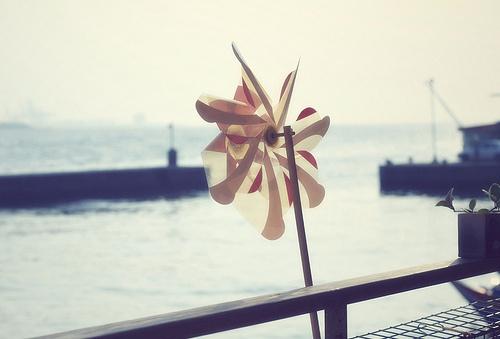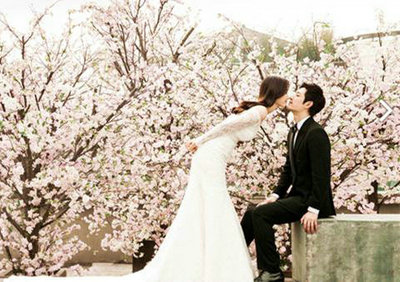
颐和园导游词怎么说
The Summer Palace Situated in the western outskirts of Haidian District, the Summer Palace is 15 kilometers (9.3 miles) from central Beijing. Having the largest royal park and being well preserved, it was designated, in 1960 by the State Council, as a Key Cultural Relics Protection Site of China. Containing examples of the ancient arts, it also has graceful landscapes and magnificent constructions. The Summer Palace is the archetypal Chinese garden, and is ranked amongst the most noted and classical gardens of the world. In 1998, it was listed as one of the World Heritage Sites by UNESCO.Constructed in the Jin Dynasty (1115-1234), during the succeeding reign of feudal emperors; it was extended continuously. By the time of the Qing Dynasty (1644-1911), it had become a luxurious royal garden providing royal families with rest and entertainment. Originally called 'Qingyi Garden' (Garden of Clear Ripples), it was know as one of the famous 'three hills and five gardens' (Longevity Hill, Jade Spring Mountain, and Fragrant Hill; Garden of Clear Ripples, Garden of Everlasting Spring, Garden of Perfection and Brightness, Garden of Tranquility and Brightness, and Garden of Tranquility and Pleasure). Like most of the gardens of Beijing, it could not elude the rampages of the Anglo-French allied force and was destroyed by fire. In 1888, Empress Dowager Cixi embezzled navy funds to reconstruct it for her own benefit, changing its name to Summer Palace (Yiheyuan). She spent most of her later years there, dealing with state affairs and entertaining. In 1900, it suffered again, being ransacked by the Eight-Power Allied Force. After the success of the 1911 Revolution, it was opened to the public.Composed mainly of Longevity Hill and Kunming Lake, The Summer Palace occupies an area of 294 hectares (726.5 acres), three quarters of which is water. Guided by nature, artists designed the gardens exquisitely so that visitors would see marvelous views and be amazed by perfect examples of refined craftwork using the finest materials.Centered on the Tower of Buddhist Incense (Foxiangge) the Summer Palace consists of over 3,000 structures including pavilions, towers, bridges, and corridors. The Summer Palace can be divided into four parts: the court area, front-hill area, front-lake area, and rear-hill and back-lake area.Front-Hill Area: this area is the most magnificent area in the Summer Palace with the most constructions. Its layout is quite distinctive because of the central axis from the yard of Kunming Lake to the hilltop, on which important buildings are positioned including Gate of Dispelling Clouds, Hall of Dispelling Clouds, Hall of Moral Glory, Tower of Buddhist Incense, the Hall of the Sea of Wisdom, etc.Rear-Hill and Back-Lake Area: although the constructions are fewer here, it has a unique landscape, with dense green trees, and winding paths. Visitors can feel a rare tranquility, and elegance. This area includes scenic spots such as Kunming Lake and Back Lake , which presents a tranquil beauty, Garden of Harmonious Interest , built by imitating the layout of Southern China’s classical gardens, and Suzhou Market Street, endowed with a strong flavor of the water town Suzhou.Court Area: this is where Empress Dowager Cixi and Emperor Guangxu met officials, conducted state affairs and rested. Entering the East Palace Gate, visitors may see the main palace buildings: the Hall of Benevolence and Longevity served as the office of the Emperor, the Hall of Jade Ripples where Guangxu lived, the Hall of Joyful Longevity, Cixi's residence, the Garden of Virtue and Harmony where Cixi was entertained, Yiyun House , where once lived the Empress Longyu, and Long Gallery, which measures the longest in Chinese gardens.Front Lake Area: covering a larger part of the Summer Palace, opens up the vista of the lake. A breeze fluttering, waves gleam and willows kiss the ripples of the vast water. In this comfortable area there are the Eastern Bank and Western Bank, Seventeen-Arch Bridge, Nanhu Island, the largest island in Summer Palace, Bronze Ox, an imposing statue beside the lake, and Marble Boat, built in western style with elaborate decorations . On the western bank float six distinct bridges amongst which the Jade-Belt Bridge is the most beautiful.
洛阳附近有什么地方好玩的景区
A. 市内:龙门石窟香山寺园)、关林、白马寺、驾六 B. 东线:白马寺、玄奘故里、少林寺 C. :小浪底风景区、汉光武帝陵、龙马负图寺、王铎故居、古墓博物馆 D. 赏牡丹:王城公园、神州牡丹园、国家牡丹园、郁金香园 E. 白云山 F. 鸡冠洞、重渡沟 G. 西线:千唐志斋、汉函谷关、龙潭大峡谷、奇石山庄 H. 东南线:西泰山、玉马湖、杜康仙庄 I. 西南线:花果山、灵山寺风景区 J. 神灵寨、洛河漂流、洛书出处龙门石窟: 是河南省为数不多的世界文化遗产之一(河南省第一处取得的),影响力较大,历史由来我就不讲了,此景点门票80元,是市内景点中票价最高的。
在市区有多路公交车可到达,1元至1.5元不等,交通十分方便.建议游览时请导游做一下讲解,因为单纯的观赏不了解每座石窟的历史背景及内涵。
白马寺: 寺院虽不大,却为中国第一古刹,历史攸久,较有影响力,为中国四大古寺之一。
门票35元,在洛阳市的东郊白马市镇,可坐56路公交到达(火车站首发,穿过金谷园路到中州路再走启明路到达,约13公里,公交票价1.5元) 关林: 自古皇家墓地叫陵,圣人墓地为林,关林是关羽(被称为武圣,参喻孔子文圣、吴道子画圣)的首级的陵地(身体在湖北宜昌),在海外极有影响力,如果你有兴趣或者有欲望去膜拜,当然值得一睹,此门票30元,同龙门石窟一个方向,相距约5公里。
周王场广场车马坑: 为国内第一次发掘出王乘六马驾车的绝对权威 ,也解读了“天子驾六”成语的由来。
此地原拟修建现代高层建筑,因发掘此周王墓地,就地修建了博物馆。
为洛阳的市中心,门票20元。
市内数十路公交车可达,交通极便利。
洛阳牡丹: 自古有文人诗词使牡丹誉满天下。
“洛阳地脉花最宜,牡丹尤为天下奇”、“唯有牡丹真国色,花开时节动京城”。
一年一度的牡丹花会在4月10日至5月8日举办,但进入5月份,牡丹基本都开完了,4月15日基本是盛花期。
洛阳王城公园的牡丹年代久、树株大,国际牡丹园的品类全,花样多。
另外西苑公园、牡丹公园、国家牡丹园、中国园花园都可以观赏,还是建议你到王城公园,在中州西路西头,交通方便,市区十几路公交可达,门票20元。
洛阳博物馆、古墓博物馆、洛阳工业(建国初期大型军工、民用企业)游、洛阳新区及新区亚州最大的音乐喷泉。



